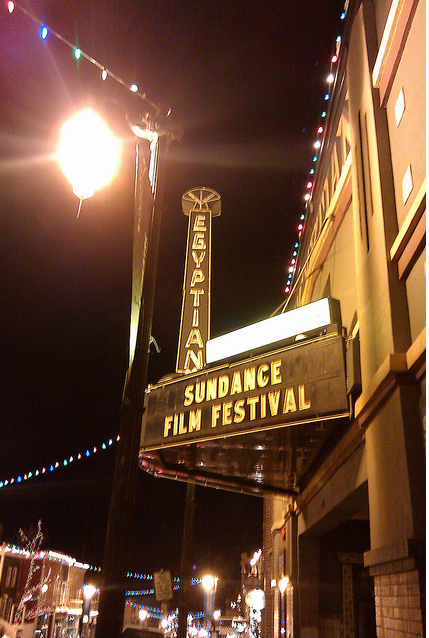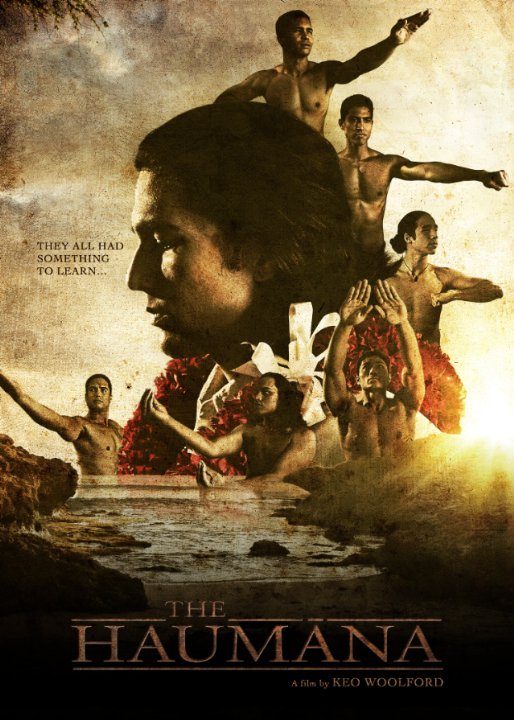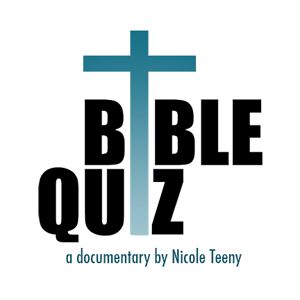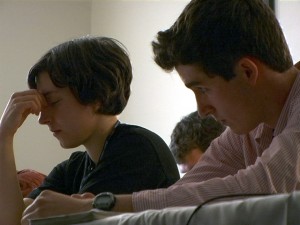
A feature film about male hula dancers enjoys niche success
Written by Keo Woolford, edited by Jeffrey Winter
EDITORS NOTE: Anyone who has read the TFC blog or heard us speak in public knows that strategies for monetizing independent film through audience engagement, focused niche marketing, grassroots outreach and DIY/hybrid release techniques are the tenets of what we teach and preach. Too many filmmakers get lost in the dream that their film should be seen by everyone, so they forget to identify and target (or they willfully ignore) the core demographic for their film.
Every once in a while, however, a film comes along that grows organically from a community, and through careful nurturing by the filmmakers, manages to excite true buzz in its core audience. TFC member film THE HAUMANA, a 2013 film about a high school boy’s hula troupe by filmmaker/actor/hula dancer Keo Woolford, is a perfect model for this kind of niche DIY strategy, born from genuine community spirit.
This month on the blog, we have been advising those headed into the Winter and Spring festivals. If you still haven’t identified the core audience of your film, this post should give you something to think about.
As an actor, I’ve lived and worked in London, New York and Los Angeles. Wherever I go, I take my culture and home with me. I am a proud hula dancer and I would get a little defensive when people would flap their hands at me or ask me, “Where’s your hoop?” It was amazing to me how little people knew about hula and that men even danced hula. This perspective was coming from intelligent and esteemed circles of people, including educators at the University level.
I was blessed to have been commissioned to write and perform a one-man show, directed by Roberta Uno and supported by other sympathetic people and organizations in New York that would expose the struggle of holding on to tradition in post-modern Hawai`i, far from the misconception and misrepresentation of our culture in the global mass media. The show toured for about three years across the United States and also to Manila. Inevitably, audience members would ask if I was going to make a movie about this.
Seed planted.
Cut to a few years later, in between acting gigs, and the conception of the screenplay was born. I originally wrote the lead role for myself. But as time for production crept up, I knew it was my responsibility to oversee the project to keep my vision intact.
The screenplay and film were created for the culture I feel so proud to be a part of; the hula community, both in Hawai`i and outside of Hawai`i. It was also for the local Hawai`i population and the diaspora of Hawaiians and former residents of Hawai`i who still maintain a strong connection to their home and for the people who want to know a little bit more about our culture. It was a goal of mine to show this side of our culture from an insider’s perspective versus someone’s “idea” of what our culture is about. At the same time, I wanted to entertain the audience and not be didactic or documentary about the approach.
I won’t say too much about the budget except that this would be considered a micro-budget feature. I put up most of the money and my best friend helped me raise the bulk of the rest by getting friends to invest for producer points. We did an Indiegogo campaign, which raised a couple of thousand extra. More than anything, though, it was the generosity of the community, crew and cast that kept our budget so low. Everyone worked for reduced or base rates, and the rest of the resources, work, time and talents were enthusiastically “donated.”
This was my first venture in such an undertaking. I have no college or film school degree, and no previous experience in writing, directing or producing such a project. I just had the burning passion to show the world a little more about our culture and assumed the hula and Hawaiian community at home and at large felt the same way about seeing something like that. Therefore, although I didn’t think about it much at first, I always knew that there was a core audience I could draw on, and hoped this film would speak to them.
My initial idea was to get into all the big festivals. Deadlines were coming up quickly and I sent them unfinished versions of the film (which I will never, ever, ever do again, even if they say they accept unfinished submissions). One by one, I was denied. I didn’t mind so much. It drove me to make the film better and gave me that much more time to finish my film the way I wanted. And in the end, I realized I needed every extra minute.
Finally, a programmer named Anderson Le who works for both the Hawaii International Film Festival and Los Angeles Asian-Pacific Film Festival approached me about submitting to these two festivals [editor’s note: Hawaii International (HIFF) and LAAPFF are unquestionably two of the most important showcases for Asian/Asian-American/Pacific Islander film in North America. HIFF also includes many other kinds of cinema as well, but is particularly well known as a “gateway to Asia.” It is important to remember that many “niche” films may find better premieres in specialty festivals than in the large, generic ones.] At that point, I had really become gun shy about submitting an unfinished cut, but ended up giving him the latest version to screen. This time proved to be a charm.
THE HAUMANA was accepted into both festivals and ended up winning the Audience Award at both festivals. It made history at HIFF by being only the second film to ever sell out the 1400-seat Hawaii Theatre (the first was Crouching Tiger, Hidden Dragon) and it was HIFF’s Official Closing Night Film. We also won a Special Jury Prize for Best First Feature from LAAPFF. Since then, it has played in a handful of other film festivals and won another Audience Award at the Philadelphia Asian Film Festival and was nominated for Best Film and Best Ensemble at the Orlando Film Festival.
With the support of these festivals, the word of mouth has spread quickly. From the success we garnered at HIFF, the film was picked up for a run at a small theatrical cinema on O`ahu, where the opening weekend gross was around $10,000. It just completed it’s 9th week at the theater. It is also available On-Demand to all Hawai`i residents
The parent company of the theater in O’ahu (Pearlridge Consolidated) was so enthusiastic about the numbers that they also invited the film to open at a theater they own in New York City, the well-known Village East Cinema. I originally assumed they wanted it for a single screening, but then they told me they wanted it for a one-week limited engagement! And then it was extended for a second week! I don’t have the grosses at the moment, but hope they will give them to me soon.
In addition, the film has also been playing a combination of four-wall screenings and Gathr screenings across the county, selling out the majority of the screenings where the average net is approximately $1500-$2000 per four-wall event.
The strategy has been simple. Hit the core target audience of the film and let the word of mouth carry it even further. Wherever the film has played, the word of mouth has been incredibly strong. The community is passionate about their culture and hungry for work that represents them in a positive and authentic light. I know this, because I am one of them. I have the same passion and hunger for my culture.
Most of the marketing has come from social media. I’m almost embarrassed to say that I didn’t start a Facebook page until about a year after we wrapped principle photography! But once I realized the power of social media, I went all in and I am amazed at how quickly the word spread about the film through Facebook alone. I also have a dear friend, Tracy Larrua, who is my PR person. She has been extremely hardworking and effective in getting the news out about the film into TV and press in various forms. And I had a trailer made as a teaser and then as a 30-second TV spot that played Hawai’i for 5 weeks, which has also been well-received on YouTube.
Through Facebook, I had been getting many inquiries on our page about screenings in a bunch of locations around the world. I did some research on four-walling and once the film made it’s Hawai`i premiere, I wanted to get it out to as many places as I could. The handful of festivals the film was invited to didn’t reach many areas the inquiries were coming from, so I put up a page on our website that allowed anyone who wanted to set up a screening or fundraiser event to contact us to arrange one.
The emails flooded in. Most were from Hālau (hula schools) around the country who wanted to use the film as a fundraiser to raise awareness about hula and our culture. There are several thousand hula schools across the U.S. alone, and these have been an invaluable resource for four-walled community screenings of the film. In general for fundraisers, we split the cost of the theater and then split the revenue from ticket sales. The average costs of the theaters have been about $850. The average net from the screenings has been about $1200. [Editor’s note: on an earlier film TFC worked on, another Hawaii-themed film called PRINCESS KAIULANI, we also used the Halau network for word-of mouth outreach. You can get a taste of what that network looks like at http://www.mele.com/resources/hula.html. It was easily found via Google. It is worth noting that many niche films have some sort of network like this that can be identified, although certainly not always as loyal as this one!]
I was also very fortunate to have a grant from the Ford Foundation pay for the flights and accommodations for the screenings when my travel wasn’t paid. Now we are signed with Gathr, a Theatrical On-Demand company that arranges screenings anywhere in the country. I still do the fundraiser model for the groups that still want to do those.
As of this writing, I plan to continue to do Gathr and fundraiser/four-wall screenings across the country and then pursue a similar model in Japan and Mexico where the hula communities are even larger than in the United States. I have been getting requests on our website and Facebook page from around the world about the film and hope to reach them somehow as well. A DVD release is planned sometime in the middle of 2014 for the States, after we get the word out a little bit more through the screenings and grassroots tour. There are a couple of other festivals that the film will play in as well.
In the beginning, I was just hoping the film would get into a couple of festivals. And now I am traveling to so many places and seeing how people are affected by the film. It has turned out to be so much more than I had expected in so many ways. I am continually humbled and overwhelmed by the response of the film and am so grateful for every experience it has brought me.
EDITOR’S POSTSCRIPT: We posted this blog not to try and trick anyone into thinking that ALL indie films can find niche success in this manner – of course not all films lend themselves to this kind of passionate niche marketing. But rather THE HAUMANA serves as a mirror that all films should at least take a long look into, asking yourself the all-important question….who is the audience for my film?
Jeffrey Winter December 30th, 2013
Posted In: Distribution, Film Festivals, Marketing
Tags: Gathr, grassroots outreach, Halau, Hawai'i, Hawaii International Film Festival, hula, indiegogo, Jeffrey Winter, Keo Woolford, Los Angeles Asian-Pacific Film Festival, niche audience, The Film Collaborative, The Haumana, word of mouth
Considerations before starting distribution
Written by Orly Ravid and Sheri Candler
Now that the line up for feature films screening in Park City has been announced and the Berlinale is starting to reveal its selections, let’s turn our attention to the potential publicity and sales opportunities that await these films.
For those with lower budget, no-notable-names-involved films heading to Park City this January, we understand the excitement and hopefulness of the distribution offers you believe your film will attract, but we also want to implore you to be aware that not every film selected for a Park City screening will receive a significant distribution offer. There are a many other opportunities, perhaps BETTER opportunities, for your film to reach a global (not just domestic) audience, but if you aren’t prepared for both scenarios, the future of your film could be bleak.
For any other filmmaker whose film is NOT heading to Park City, this post will be vital.

Have you been a responsible filmmaker?
What does this mean? Time and again we at The Film Collaborative see filmmakers willingly, enthusiastically going into debt, either raising money from investors or credit cards or second mortgages (eek!) in order to bring their stories to life. But being a responsible filmmaker means before you started production, you clearly and realistically understood the market for your film. When you expect your film to: get TV sales, international sales, a decent Netflix fee, a theatrical release, a cable VOD/digital release, do you understand the decision making process involved in the buying of films for release? Do you understand how many middlemen may stand in the money chain before you get your share of the money to pay back financing? Was any research on this conducted BEFORE the production started? With the amount of information on sites like The Film Collaborative, MovieMaker, Filmmaker Magazine, IndieWire and hundreds of blogs online, there is no longer an excuse for not knowing the answers to most of these questions well before a production starts. This research is now your responsibility once you’ve taken investors’ money (even if the investor is yourself) and you want to pursue your distribution options. Always find out about middlemen before closing a deal, even for sales from a sales agent’s or distributor’s website, there may be middlemen involved that take a hefty chunk that reduces yours.
Where does your film fit in the marketplace?
Top festivals like Sundance, Berlin, Cannes, Toronto give a film the start of a pedigree, but if your film doesn’t have that, significant distribution offers from outside companies will be limited. Don’t compare the prospects for your film to previous films on its content or tone alone. If your film doesn’t have prestige, or names, or similar publicity coverage or a verifiable fanbase, it won’t have the same footprint in the market.
Your distribution strategy may be informed by the size of your email database, the size of the social media following of the film and its cast/crew, web traffic numbers and visitor locations from your website analytics, and the active word of mouth and publicity mentions happening around it. These are the elements that should help gauge your expectations about your film’s impact as well as its profitability. Guess what the impact is if you don’t have these things or they are small? Yeah…
Understand the difference between a Digital Aggregator and a Distributor?
Distributors take exclusive ownership of your film for an agreed upon time. Aggregators have direct relationships with digital platforms and often do not take an ownership stake. Sometimes distributors also have direct relationships with digital platforms, and so they themselves can also serve as an aggregator of sorts. However, sometimes it is necessary for a distributor to work with outside aggregators to access digital platforms.
Do understand that the digital platform takes a first dollar percentage from the gross revenue (typically 30%), then aggregators get to recoup their fees and expenses from what is passed through them, but there are some that only take a flat fee upfront and pass the rest of the revenue back. Then distributors will recoup any of their expenses and their fee percentage, then comes sales agents with their expenses and fees. And finally, the filmmaker will get his or her share. Many filmmakers and film investors do not understand this and wonder why money doesn’t flow back into their pockets just a few months after initial release. You guys are in the back of the line so hopefully, if you signed a distribution agreement, you received a nice advance payment. Think how many cuts are coming out of that $5.99 consumer rental price? How many thousands will you have to sell to see some money coming in?
Windowing.
If you do decide to release on your own, knowing how release windows work within the industry is beneficial. Though the time to sequence through each release window is getting shorter, you still need to pay attention to which sales window you open when, especially in the digital space. Anyone who has ever had a Netflix account knows that, as a consumer, you would rather watch a film using the Netflix subscription you have already paid for rather than shell out more cash to buy or rent a stream of the latest movies. But from a filmmaker/distributor’s perspective, this initial Transactional VOD (TVOD) window maximizes profits because, unlike a flat licensing fee deal from Netflix, the film gets a percentage of every transactional VOD purchase. So if you release your film on Netflix or another subscription service (SVOD) right away without being paid a significant fee for exclusivity, you are essentially giving the milk away. And when that happens, you can expect to see transactional purchases (a.k.a. demand for the cow) decrease.
Furthermore, subscription sites like Netflix will likely use numbers from transactional purchases to inform, at least in part, their decision as to whether or not to make an offer on a film in the first place. In other words, showing sales data, showing you have a real audience behind your film, is a key ingredient to getting on any platform where you need to ask permission to be on it. Netflix is not as interested in licensing independent film content as it once was. It is likely that if your film is not a strong performer theatrically, or via other transactional VOD sites, it may not garner a significant Netflix licensing fee or they may refuse to take it onto the platform.
Also be aware that some TV licensing will be contingent on holding back subscription releases for a period of time. If you think your film is a contender for a broadcast license, you may want to hold off on a subscription release until you’ve exhausted that avenue. Just don’t wait too long or the awareness you have raised for your film will die out.
Direct distribution from your website
Your website and social channels are global in their reach. Unless you are paid handsomely for all worldwide distribution rights to your film, your North American distributor should not run the channels where you connect with your audience; the audience you have spent months or years on your own to build and hope to continue to build. These channels can be used to sell access to your film far more profitably for you than going through several middlemen.
Many low budget American films are not good candidates for international sales because the audience worldwide isn’t going to be big enough to appeal to various international distributors. Rather than give your rights to a sales agent for years just to see what they can do, think seriously about selling to global audiences from your own website and from sites such as Vimeo, Youtube, and iTunes. In agreements we make with distributors for our members, we negotiate the ability to sell worldwide to audiences directly off of a website without geo-blocking unsold territories. If you are negotiating agreements with other distributors, the right to sell directly can be extremely beneficial to carve out. If you do happen to sell your film in certain international territories, it is wise to also make sure you do not distribute on your site in a way that will conflict with any worldwide street dates and any other distribution holdbacks or windowing that may be required per your distribution contract.
You can sell DVDs, merchandise, downloads and streaming off your own site with the added benefit of collecting contact email addresses for use throughout your filmmaking career. Above all, don’t hold out for distribution opportunities that may not come when publicity and marketing is happening. So many times we are contacted by filmmakers who insist on spending a year or more on the festival circuit with no significant distribution offers in sight and they are wasting their revenue potential by holding back on their own distribution efforts. You can play festivals AND sell your films at the same time. Many regional fests no longer have a policy against films with digital distribution in place. When the publicity and awareness is happening, that’s the time to release.
Festival distribution is a thing
Did you know that festivals will pay screening fees to include your film in their program? It’s true! But there is a caveat. Your film must have some sort of value to festival programmers. How does a film have value? By premiering at a world class festival (Sundance, Berlin, SXSW etc or at a prestige niche festival) or having notable name cast. Those are things that other festivals prize and are willing to pay for.
You should try to carve out your own festival distribution efforts if a sales or distribution agreement is presented. That way you will see these festival screening fees and immediately start receiving revenue. Our colleagues, Jeffrey Winter and Bryan Glick, typically handle festival distribution for members of The Film Collaborative without needing to take ownership rights over the film (unlike a sales agent). TFC shares in a percentage of the screening fee and that is the only way we make money from festival distribution. No upfront costs, no ownership stake.
Deliverables
This is an expense that many new filmmakers are unfamiliar with and without the proper delivery items, sales agents and distributors will not be able/interested in distributing your film. You may also find that even digital platforms will demand some deliverables. At TFC (as well as with any sales agent/distributor), we require E&O insurance with a minimum coverage of $1,000,000 per occurrence, $3,000,000 in the aggregate, in force for a term of three years. The cost to purchase this insurance is approximately $3000-$5000. Also, a Closed Captioning file is required for all U.S. titles on iTunes. The cost can be upwards of $900 to provide this file. Additionally, many territories (such as UK, Australia, New Zealand and others) are now requiring official ratings from that territory’s film classification board, the cost of which can add up if you plan to make your film available via iTunes globally. For distributors, closed captioning and foreign ratings are recoupable expenses that they pay for upfront, but if you are self distributing through an aggregator service, this expense is on you upfront.
You may also be asked to submit delivery items to a sales agent or a distributor such as a HD Video Master, a NTSC Digi- Beta Cam down conversion and a full length NTSC Digi-Beta Pan & Scan tape all accompanied by a full Quality Control report, stereo audio on tracks 1&2, the M&E mix on tracks 3&4 and these may cost $2000-$5000 depending on the post house you use. If your tapes fail QC and you need to go back and fix anything, the cost could escalate upwards of $15,000. Then there are the creative deliverables such as still photography, key art digital files if they exist, electronic press kit if it exists or the video footage to be assembled into one, the trailer files if they exist. Also, all talent contracts and releases, music licenses and cue sheets, chain of title, MPAA rating if available etc.
Distribution is a complicated and expensive process. Be sure you have not completely raided your production budget or allocated a separate budget (much smarter!) in order to distribute directly to your audience and for the delivery items that will be needed if you do sign an agreement with another distribution entity. Also, seek guidance, preferably from an entity that is not going to take an ownership stake in the film for all future revenue over a long period of time.
For those headed to Park City, good luck with your prospects. TFC will be on the ground so keep up with our Tweets and Facebook posts. If the offers aren’t what you envisioned for your film, be ready to mobilize your own distribution efforts.
Sheri Candler December 19th, 2013
Posted In: Digital Distribution, Distribution
Tags: Berlin, cable VOD, digital aggregators, digital distributors, digital film distribution, independent film distribution, Netflix, Orly Ravid, Park City, release windows, Sheri Candler, Sundance, The Film Collaborative
A look at Slamdance ’13 winner Bible Quiz
All this month, we will be sharing advice geared toward filmmakers heading to the festivals in Park City in January. Notorious for brisk weather and brisk sales, the festivals offer unparalleled access to close to 1000 members of the press as well as film buyers looking for the next big acquisition. Preparation is key as is an alternative plan in case that big sales opportunity doesn’t present itself. Today’s post will examine the outcome of documentary jury winner from Slamdance 2013, Nicole Teeny’s Bible Quiz.
SC: Did you go into the festival with sales representation or a publicist? What kind of press coverage resulted from Slamdance? From the rest of the festival run?
NT: “Most features and a handful of shorts that went into Slamdance had a publicist. It was too expensive for me so I did my own publicity. It ended up being a lot of work juggling the premiere and press, but I enjoyed the process and learned more about my audience. I was also happy with the range of publications that covered BIBLE QUIZ.
We were lucky that my feature documentary BIBLE QUIZ struck a chord with and intrigued a lot of people. We’ve received reviews and articles in Hollywood Reporter, the BBC, The Christian Post, IndieWire, San Francisco Guardian amongst others which can be seen here: www.biblequizmovie.com/press.
When we initially heard BIBLE QUIZ was selected to screen at Slamdance, I got varied advice whether it was necessary to have a sales agent, and if so, whether to wait until after the screening to sign with someone. Since this was my first film and I was learning, I ultimately decided having a sales partner would be helpful to me. I have been working with Steven Beer for domestic distribution and he’s been fantastic. He is also an entertainment lawyer so that works out well when it comes to contracts. I think that if a filmmaker decides to go with an agent, they should try to do so before their premiere.
For international sales, everyone I have talked to says you must have an international sales agent. I’ve been working with Forward Entertainment and they have been great.”
SC: What happened after Bible Quiz won the jury prize at Slamdance? Did distribution offers materialize? What lead to continuing on the circuit?
NT: “It’s hard to say exactly what caused what, but it’s a fair guess that screening and winning the jury prize at Slamdance led to a lot of interest in the film. Many distributors asked to see the film, many film reviews happened, and many other film festivals asked me to submit the film to them as well. It was great to have this kind of momentum.
Ultimately, though, each festival and distributor decides for itself whether a film is right for their audience. I think the main reason for success has been that Mikayla’s coming of age and identity story in BIBLE QUIZ is relatable to people of all ages regardless of creed, so the film connects to a lot of people, and as a result, many different festivals have screened the film.”
SC: What marketing assets did you already have in place by Slamdance? Website? Email database? Social media presence? Organizational partners? Or did those start after the festival?
NT: “Prior to screening at Slamdance, I had a website, Facebook page, Twitter account and newsletter list. I’ve found promoting the film comes way before the first film festival.
SC: In continuing to show the film at festivals, what did you learn or gain from the experience?
NT: “Timing is everything. It’s important to strike when the iron is hot. When you have something newsworthy like partnerships, press, festival acceptance, distribution etc. it’s important to use that leverage to your advantage. For instance, I found it really helpful to use festival acceptance as a way to have a reason to connect with press and get them interested in writing about the film. It’s also great to post news (articles, festivals, awards, etc.) on your film’s social media sites to engage and build your audience.
For documentary filmmakers, whenever possible, I highly recommend bringing the subject of the documentary to screenings. Mikayla,the star of BIBLE QUIZ, was great to have at Q&A’s. We have a good dynamic on stage sharing stories together plus after she endeared the screening audiences, they liked seeing where she is today. On that note, I’ve learned that audiences like to have a personable Q&A. I try to swallow my nervousness, let my personality come through and talk to the audience as though we’re at coffee together and whenever I can, use stories to answer questions.
I also try to do as much of the press before the festival so when I get to the festival I can primarily network and meet other filmmakers. It goes without saying that it’s great to have an audience and share your film. But, one of my other favorite things about festivals is hanging out with other filmmakers, festival staff and industry. Many are inspiring, fun to hang out with and end up becoming friends outside of the circuit.
I also try to see as many other filmmakers’ movies at festivals as I can because it’s important to be supportive and it is a great way connect to what’s happening in film now and find inspiration. Also, I just love movies.”
SC: Did you guide and manager the festival distribution yourself or did you have someone help you?
NT: “I managed the festival circuit mainly by myself although my associate producer, Katheryn Warzak, accompanied me to a of couple festivals. But I feel fortunate to have had many kind people give me great advice. My dear friend and mentor filmmaker, Marco Williams, was my professor at NYU and he guided me during the filmmaking and after the release in understanding which festivals to apply to. (As a side note, I think many film students do not take advantage of getting to know their professors—they are incredible resources and have vast amounts of knowledge and experience).
Festival programmers were also helpful in knowing other festivals that might be good fits for my film. I am particularly grateful to Paul Rachman and Peter Baxter at Slamdance who helped answer questions, gave me great advice and recommendations. Slamdance is truly a film festival for filmmakers and kind of like a big filmmaking family. I could not have asked for a more awesome festival at which to premiere.
Michael Feldman was our MVP when it came to the logistics of finishing the film. He was our online editor, colorist, helped me incorporate tweaks from screenings, make discs and so much more. He and I have co-directed projects together in the past so it was awesome to work with someone I trusted and knew my style.”
SC: Has any revenue been generated on the festival circuit?
NT: “Not really—if you have suggestions I’d love to hear how! I have generated some from various screenings outside the circuit though.”
SC: Has the film had the release you envisioned? Do you feel satisfied with what the screenings have accomplished?
NT: “I had no idea what to expect with the release of the film. A couple of people told me a film’s life doesn’t start until after your premiere. I disagree. I think a film’s life starts the moment a germ of an idea pops into your head, but manifests itself in two phases: The first [phase is creating the story and the second phase is sharing it.
There’s a whole caboodle that goes into getting your film to the audience: press, festivals, awards, distribution, social media/online presence, outreach partners, etc…. Managing it is almost an entirely different skill set. I personally found it thrilling and useful to learn about. The audience is always on my mind when I’m making a movie or writing something and I found this process to be another way to understand how audiences think.
I am very satisfied with where the film is now. We are planning for an early 2014 release and I can’t wait to share the film with an even broader audience. Stories and movies are moving and they connect us to one another. It’s one of the most rewarding experiences to have someone share with you that they felt touched and connected to your characters through film.”
Thanks to Nicole for sharing her film’s journey beyond its Slamdance win and good luck to those attending the upcoming Slamdance Film Festival with their films.
Sheri Candler December 11th, 2013
Posted In: Film Festivals
Tags: Bible Quiz, documentary, Forward Entertainment, independent film, Katheryn Warzak, Marco Williams, Michael Feldman, Nicole Teeny, Park City, Paul Rachman, Peter Baxter, Slamdance Film Festivals, Steven Beers, The Film Collaborative




